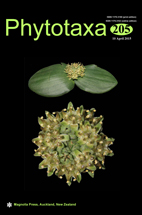Abstract
Miscanthus species including the famous energy plant M. × giganteus are considered to be second-generation energy crops. Miscanthus nudipes is an endemic species from Himalaya-Hengduan Mountains and provides important germplasm for Miscanthus breeding given its high tolerance to frost and drought. However, the taxonomy of this species remains controversial in terms of intraspecific classification, with one to nine subspecies or species recognized previously. The variation patterns of the morphological characters are not understood clearly as there have been no intensive analyses of the morphological variation across individuals and populations. Here, by sampling 15 natural populations from the entire distribution area of M. nudipes, we investigate patterns of population variation based on 39 quantitative and nine qualitative morphological characters and 14 microsatellite loci, with the aim to provide a reliable taxonomic treatment of this important species. Morphological analyses from ANOVA, UPGMA and PCA indicate that M. nudipes populations show significant differences between the Himalayas and Hengduan Mountains. A neighbor-joining tree and principle coordinates analysis of the microsatellite data support the results of the morphological analyses. Based on our results, we recognize two subspecies under Miscanthus nudipes (M. nudipes subsp. nudipes and M. nudipes subsp. yunnanensis) and provide a taxonomic treatment for the species. We propose three diagnostic characters for the subspecies identification, i.e., the ratio of callus hair length to spikelet length, the hairiness of the panicle axis and the hairiness of the peduncle.

